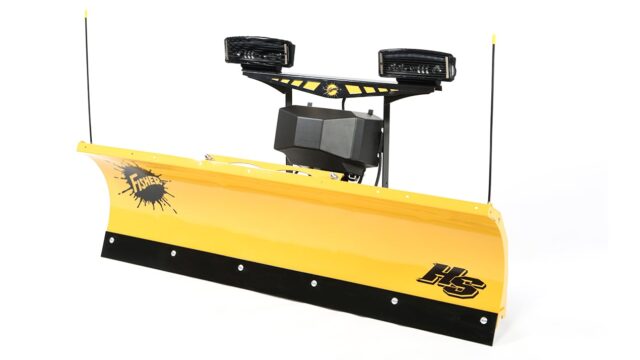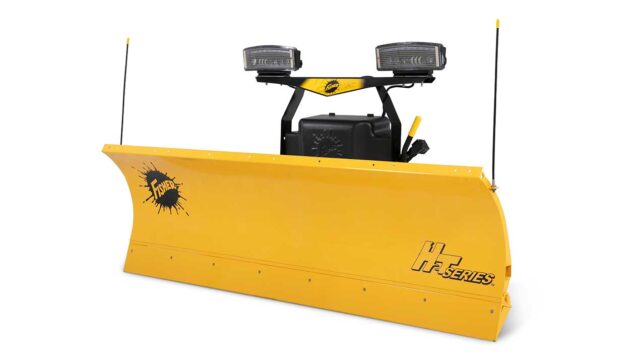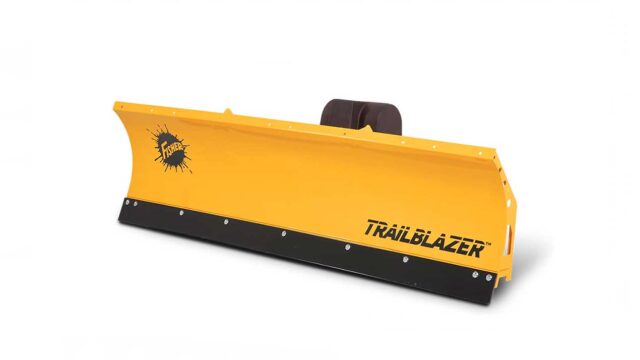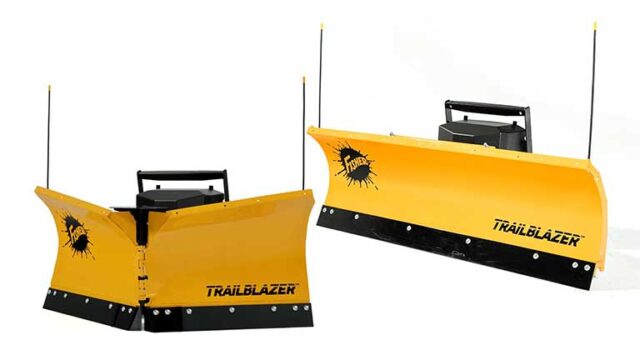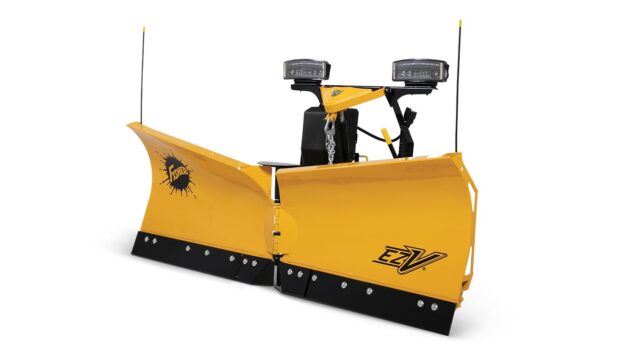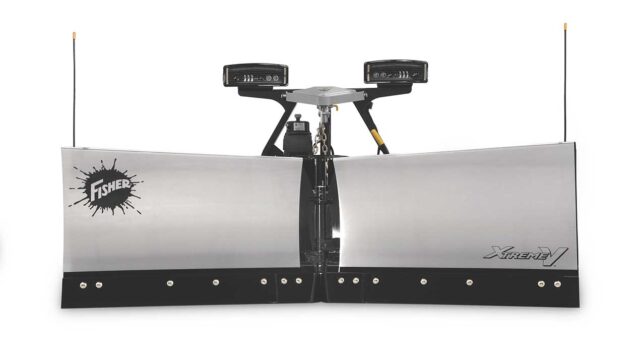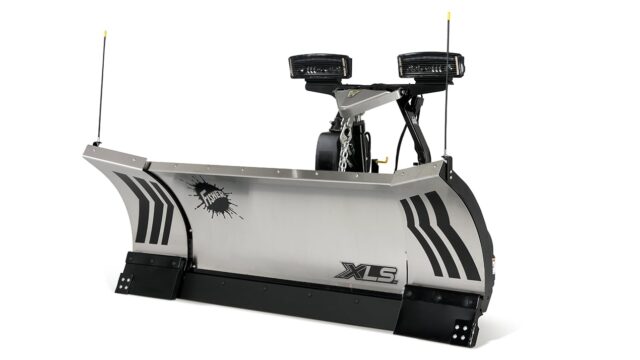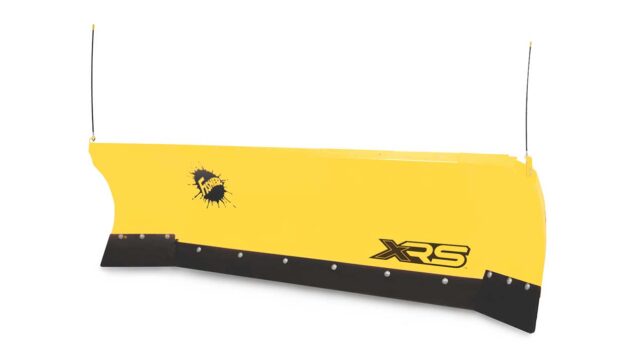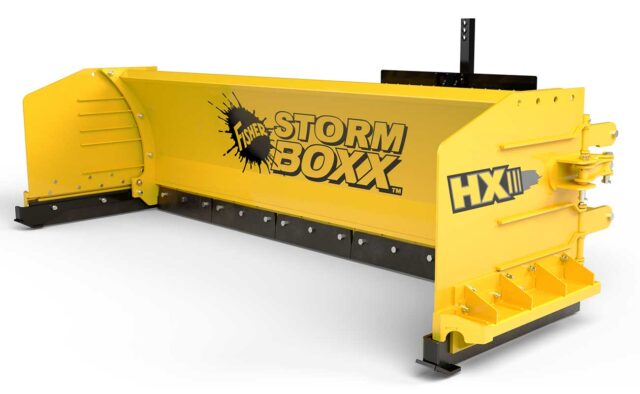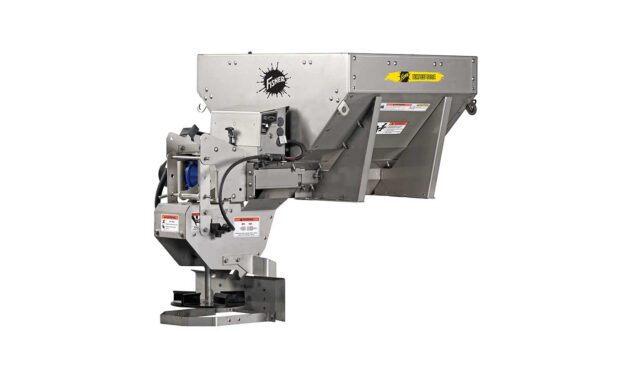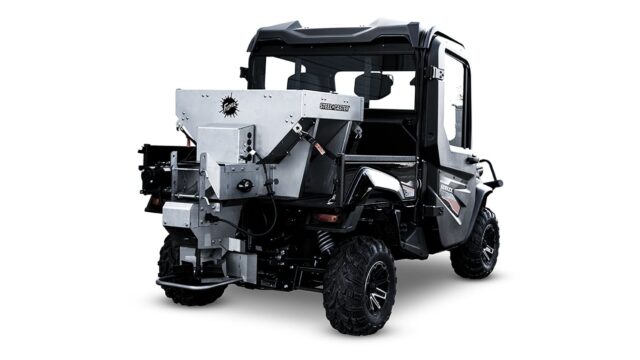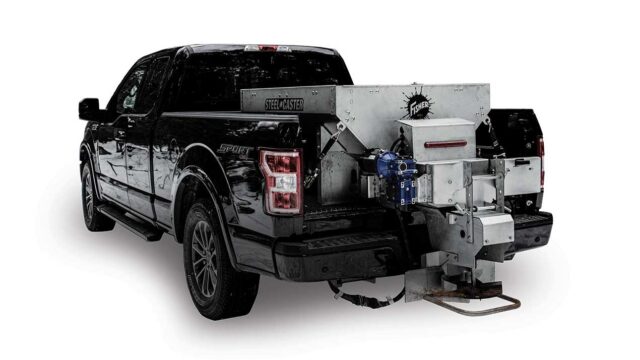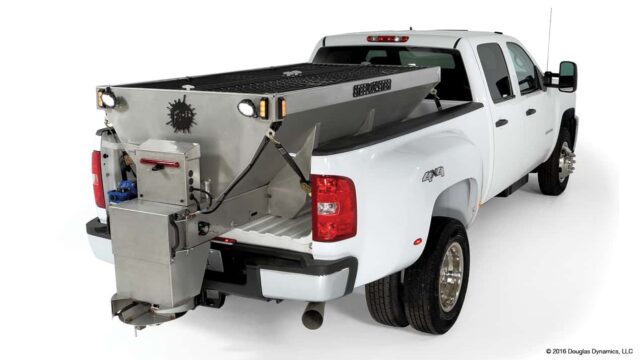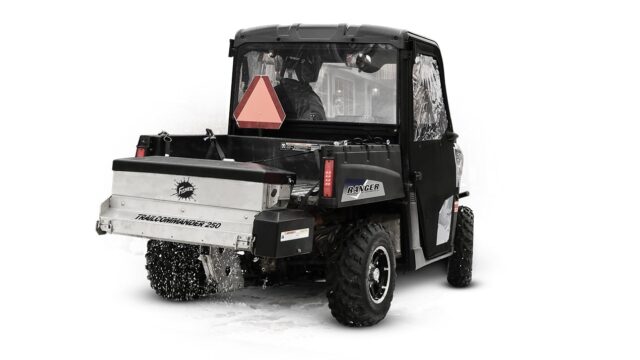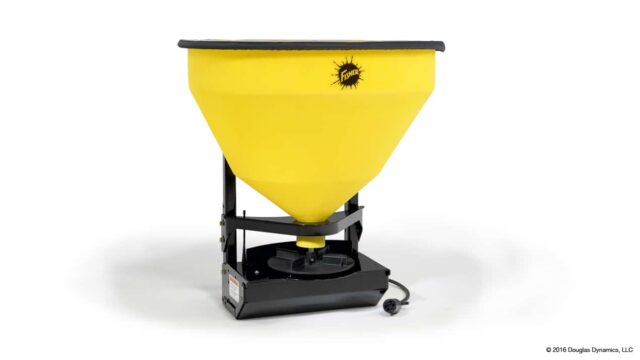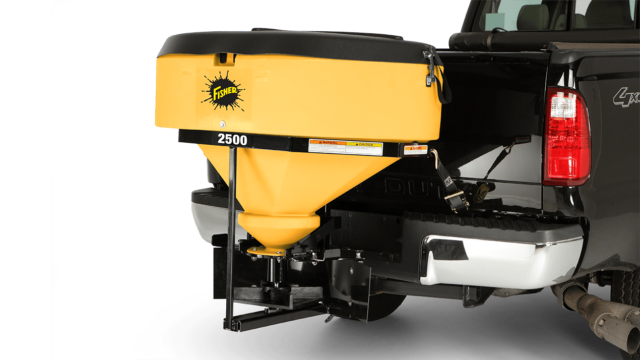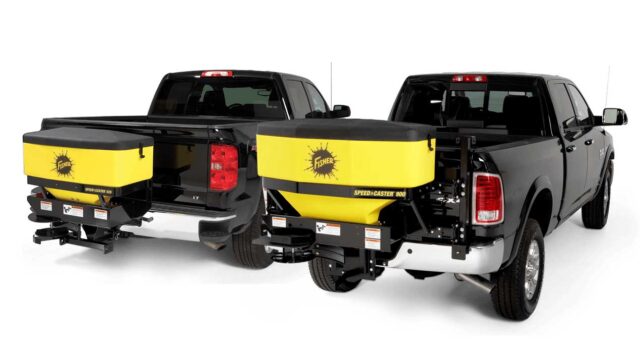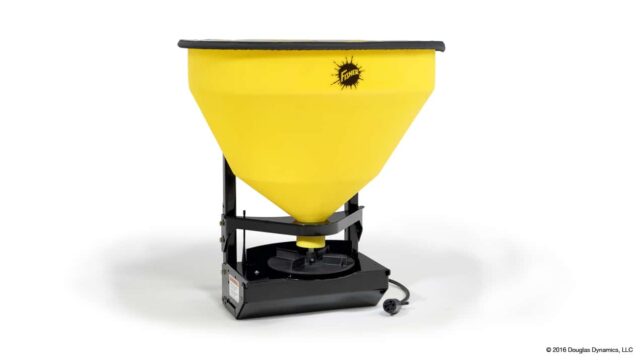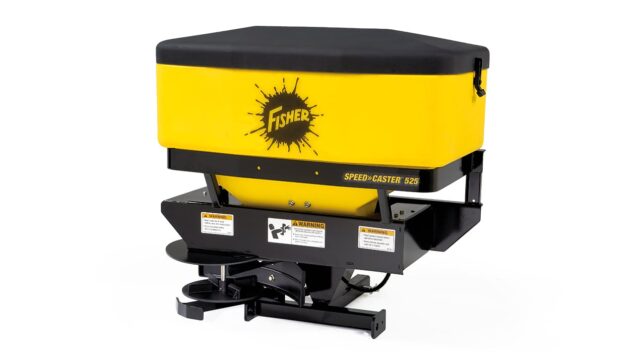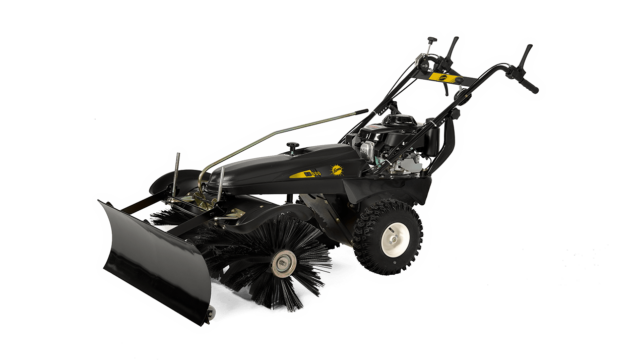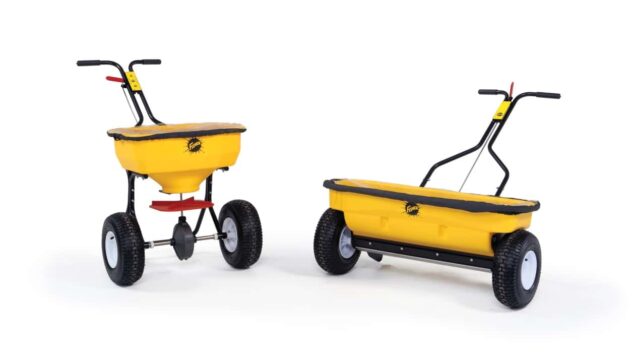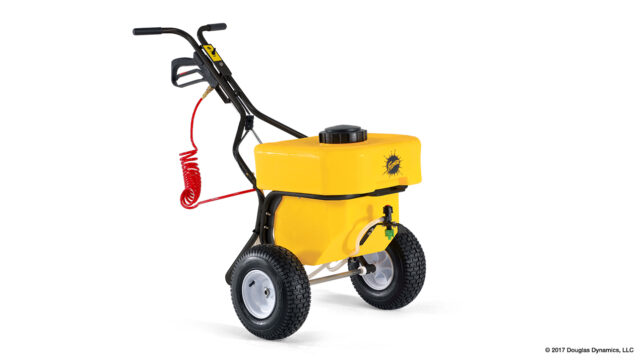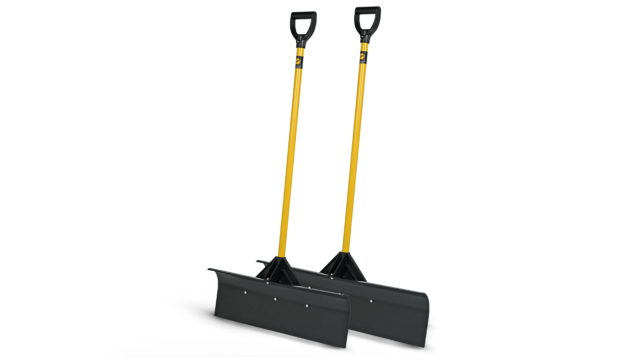The Key to Transporting Your Snow Plow Safely
Created August 11, 2016
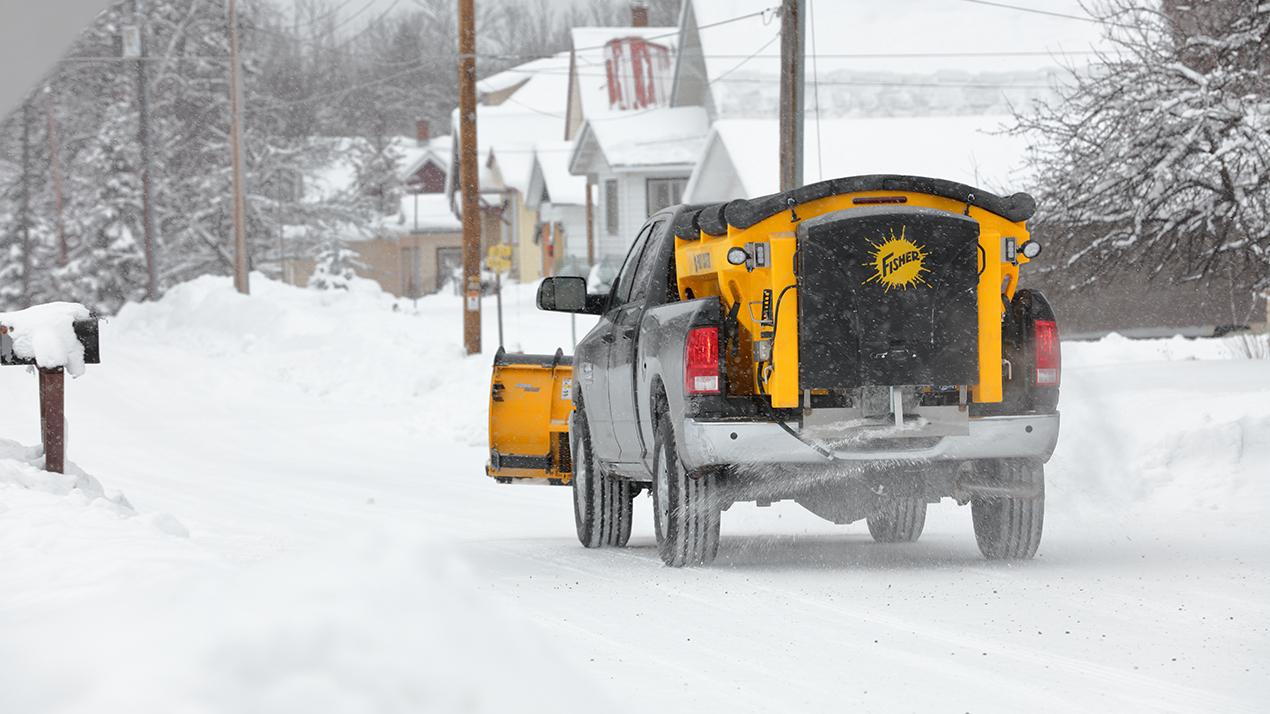
Once the blade drops and plowing begins, the safety and awareness of your surroundings are critical. Did you know that even when you are on the way to or from the job, there are things you must do to keep yourself, your truck, and other motorists and pedestrians safe?
Check Vehicle Safety Ratings & Complete a Basic Inspection
Even when you are not plowing, you still have a heavy piece of equipment mounted on the front of your truck that changes how your vehicle performs. Check the label inside the driver’s side door corner post for the gross vehicle and axle weight ratings. Depending on the axle weight ratings listed and the weight of your vehicle (including plow, occupants, ballast and cargo), you may need to add weight, or ballast, behind the rear axle to ensure the axle ratings are not exceeded or to distribute weight evenly.
Correct tire pressure is always important. When conditions are poor, each tire needs to have good contact with the road. Check the tire pressure each time you go out, and add air as needed. This is one simple way to prevent poor handling that could even cause you to lose control of your vehicle.
Nobody wants to be stranded on the side of the road, so check the engine oil, brake fluid, transmission fluid, battery, radiator coolant and windshield washer fluid. Something as simple as running out of windshield fluid can be inconvenient or leave your vision obscured enough to cause an accident.
Safety Standards When Transporting a Plow
When you are driving from job to job, make sure the blade is positioned correctly. With a straight blade, angling it to the right is one way to do this. With a wing plow, ensure it is in a retracted position. Always make your blade adjustments before you start driving, never while you are driving. Once your blade is positioned, you should turn off the plow controls for transport. Make sure the plow blade is not getting in the way of the auxiliary plow headlights. You can usually position the blade low enough that these important lights are still visible. You will also want to make sure the blade is positioned so it won’t hit passing snow banks.
The height of the plow while driving is important for another reason. Sometimes, the plow could prevent cool air from flowing past the radiator. If you see your temperature rising or if your truck actually overheats, pull over right away and raise or lower the blade to clear the way for air to get to the grille.
While four-wheel drive is one of mankind’s greatest inventions, it does not make you invincible. Always buckle up and keep your speed at 45 mph or under. You also will want to check your vehicle manufacturer’s manual for instructions on when and when not to engage four-wheel drive.
Being mindful of your surroundings at all times is important. But if you follow these simple steps, you will have fewer things to worry about. And you will increase the chances of completing each job incident-free.
